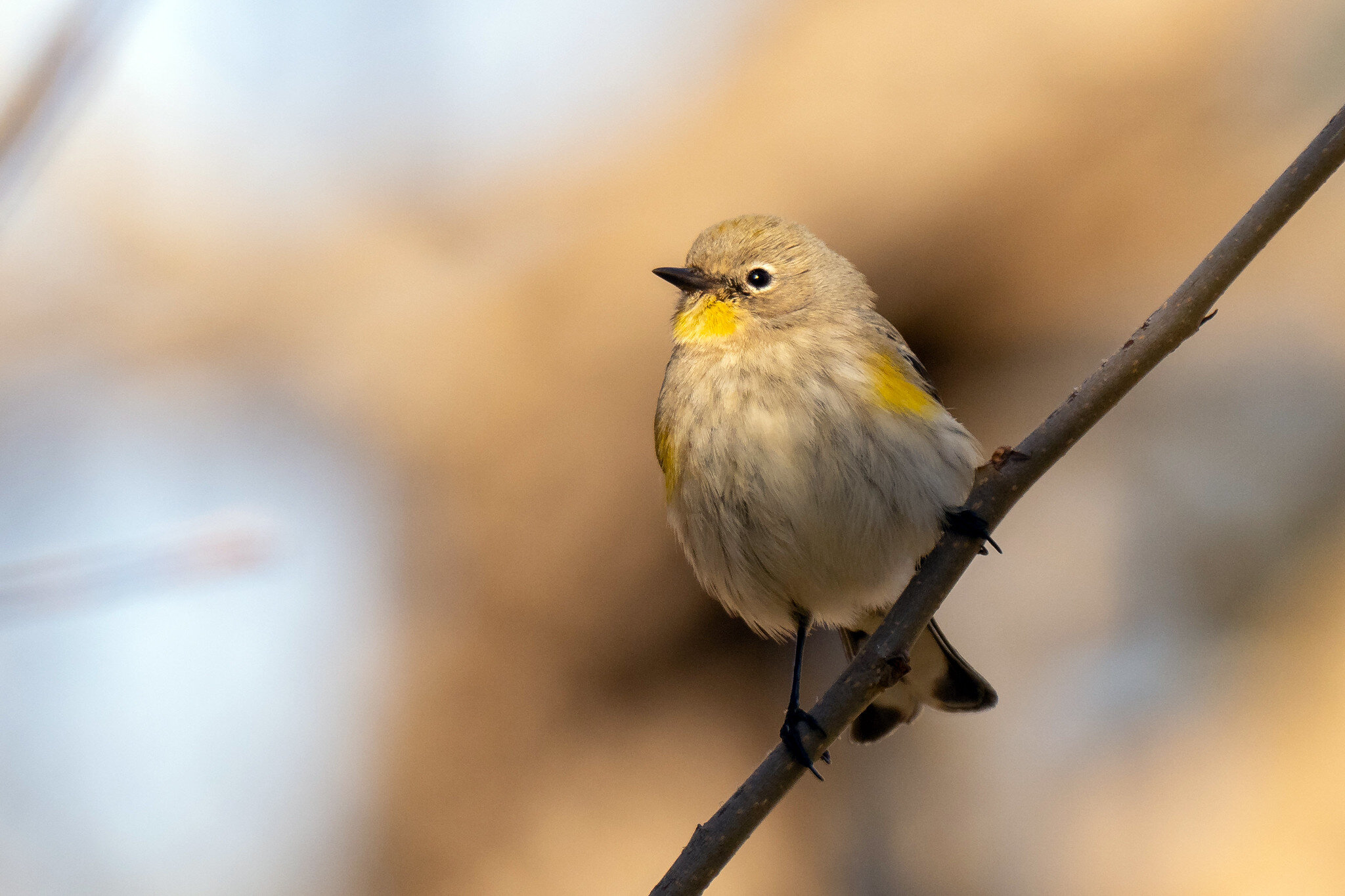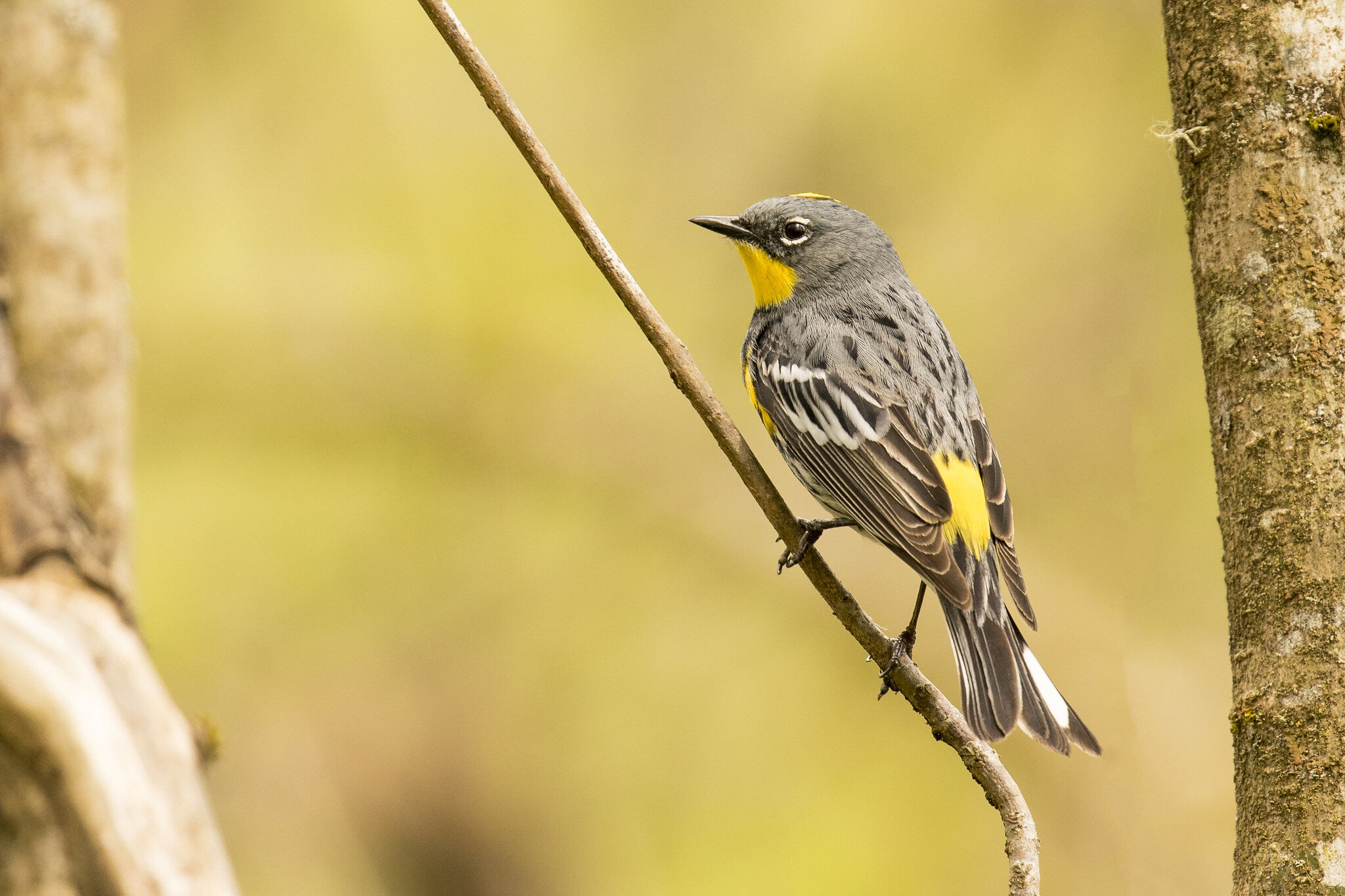The Yellow-rumped Warbler is one of the most common and adaptable warblers. The bird will overwinter from Wisconsin to Mexico, its breeding range extends across the continent from the upper Midwest to the northeast, down into Appalachia, and in western mountain ranges and along the Pacific coast. Breeding pairs are even found in southern Mexican mountain ranges.
Yellow-rumped Warbler photos by Mick Thompson
Its diet corresponds to its breeding range; the bird eats off manure piles, feasts on caterpillars and a host of bugs during the warmer months, and pilfers seed from a wide range of plants, but the most noteworthy food item, and a plant for which the bird earned its former name (Myrtle Warbler), is the wax myrtle and bay berry. This waxy fruit grows along the eastern coast of the US, and is an important food source for migrating and overwintering populations.
Photo by Kelly Colgan Azar
Kenn Kaufmann has a terrific chapter of Kingbird Highway on Yellow-rumped Warblers on the outer banks of the Carolina coast. In February of 1973, a terrible winter storm struck the region, and Kenn witnessed the downside of the short migration of the warbler to the Southern US states: weather. During this nasty storm, Kenn surmised the Yellow-rumped Warblers were flocking to the outer banks to catch the warmth of the coastal region, but it was cold, snowing and sleeting even here, and they witnessed struggling and dying birds. The next year’s Christmas Bird Count for that area noted a low population of Yellow-rumped Warblers.
On the whole, the Yellow-rumped Warbler does very well for itself, and has returned to Wisconsin in the past week or so. The birds mark the start of budding trees and caterpillar season: they will feast on the early caterpillars on species like elms and boxelders.
You can make out the Yellow-rumped Warbler by, of course, its yellow rump, but also white on its outer tail feathers, which appear almost junco-like in flight. The Yellow-rumped Warbers are a delight to follow and train your eye on early in the warbler season, as they glean from foliage, fly-catch, peck at bark, and forage for seed. In the past few years, there have been large numbers of Yellow-rumped Warblers around the Kettle Pond, but you can find them almost anywhere within the sanctuary over the next month.
Written by Drew Harry, Faville Grove Sanctuary land steward
Cover photo by Mick Thompson








